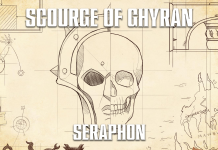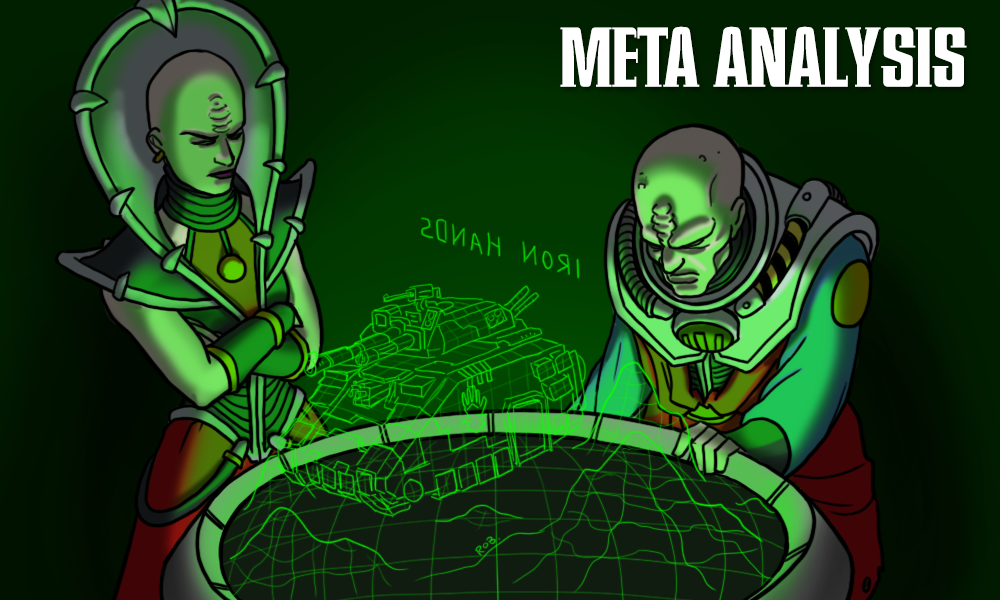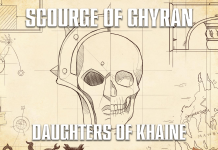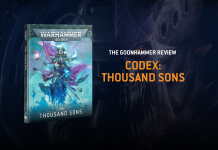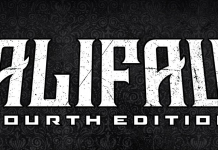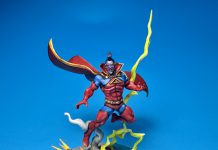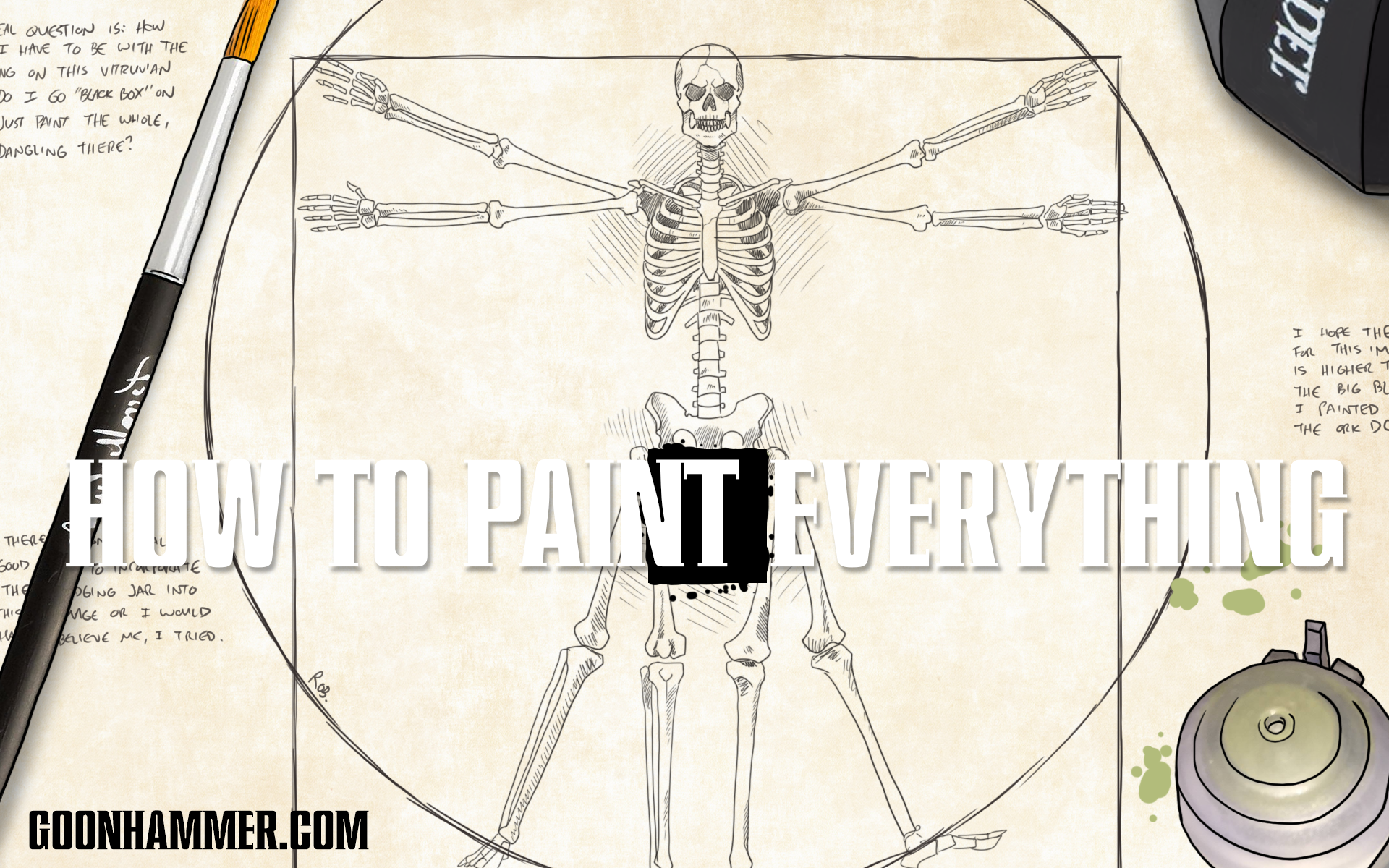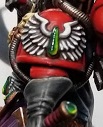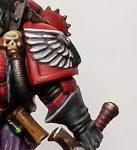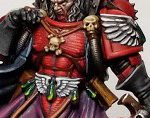In our How to Paint Everything series, we take a look at how to paint different models, armies, and materials, and different approaches to painting them. In this article, we’re diving into the Lord of Death himself, Mephiston.
Who is Mephiston?
Mephiston was not always known by his more famous name – in his former life he was Calistarius, a simple Librarian of the Blood Angels (as much as a wizard space Renaissance vampire can be described as ‘simple,’ anyway). In this form he is best known as the Librarian who accompanied the Blood Angels’ assault on the Space Hulk Sin of Damnation.
It was the Second War of Armageddon where Calistarius died and was reborn, however. While fighting in the defence of Hades Hive, Calistarius succumbed to the Black Rage and, like other victims of the Blood Angels’ curse, was inducted into the Death Company. During an assault on an Ecclesiarchy building, the building collapsed, and Calistarius was trapped, still raging as he imagined himself to be Sanguinius. For an ordinary person, even an ordinary Blood Angel, this would have been a long, slow, death sentence; for Calistarius it was the moment of his apotheosis. Fighting back the madness of the Black Rage, he eventually, through sheer force of will, overcame it. On the seventh day of his entrapment he burst forth from the tomb; he was Calistarius no longer. Now he was Mephiston, the Lord of Death.
It was not an easy birth. The ruins had fallen to the Ork menace, and Mephiston, weaponless and with his armour in ruins, was immediately confronted by a whole mob of them. Something had awakened in him, though, and he was now far more powerful than an ordinary Space Marine. He slaughtered the Orks mercilessly, forcing them into retreat after he punched through their boss Nob’s chest bare-handed and tore out his heart.
Mephiston is now one of the most powerful psykers in the Imperium, his powers enhanced by his rebirth, as well as possessing greater physical strength and toughness too. He shrugs off blows that should wound or kill him, and moves with lightning quickness. He rose to even greater heights after crossing the Primaris Rubicon, his altered physiology enhanced even more by the dark technology of Belisarius Cawl.
Where to Read More
Mephiston is a popular character with Black Library writers, with both a standalone novel and his own standalone series.
Mephiston: Lord of Death was written by David Annandale, covering the time shortly after Mephiston’s transformation as he and his battle brothers descend to the mysterious world of Pallevon.
The Mephiston series, written by Darius Hinks, starts with Mephiston: Blood of Sanguinius, followed by Mephiston: Revenant Crusade and Mephiston: City of Light – this takes place in the Dark Imperium period, with Mephiston battling in the Imperium Nihilus.
Crab-Stuffed Mushrooms’ Method
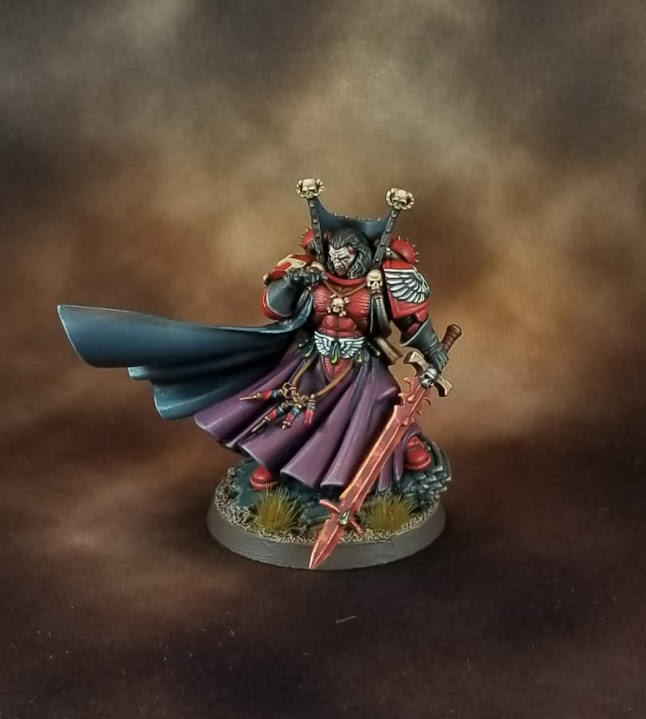
I don’t collect Blood Angels, but Mephiston is such an iconic miniature. He’s frequently described as “sinister” in the background and I wanted the mini to reflect it:
“…there are whispers that Mephiston paid a dreadful price for his resurrection, that when he mastered the Black Rage something altogether more terrible took its place.”
The color scheme denotes him as a Blood Angel, but his skin is pale and his hair is no longer blonde.
I went with blood stains on his mouth and glove, suggesting that he may be transforming into something darker (part of his Faustian bargain for conquering the black rage). If I could go back, I’d add the body of a fallen Death Company to seal the deal.
Cool things I learned painting: Flesh Tearers Contrast Paint is great for glazing red. I should’ve gone brighter on the red highlights, first. Incubi Darkness is also great for blacklining red. Thanks to GW’s Darren Latham’s vid for both tips – check him out on YouTube!
Assembly warning:
- Right Hand: Mephiston’s right hand (the one without the gun) may require some bending or manipulation during assembly to ensure it lines up closer to his mouth. Try playing with it before gluing in place permanently.
- Mephiston’s Sword and Vials of Blood: I prefer to paint my models wholly assembled, but it was difficult to paint Mephiston’s robes while his sword and vials of blood were attached. Consider leaving these off the model when painting.
- Mephiston’s Head: I didn’t glue the head to the body so I could prime and paint it separately.
Wet Palette:
Wet palettes are one of the biggest game changers to how you’ll paint your minis. If you’re not using one. Get one immediately! You can make one yourself, but I recommend this one from Red Grass games.
Why use a Wet Palette?
The acrylic paints we use are designed to dry quickly, faster than we have time to paint! Wet Palettes help you avoid painting “out of the bottle”, keep your paints lasting longer and keep your paint layers thin!
Undercoating / Priming:

Hobby Cheating: After priming your model, hold it under a bright light and take a photo. This will act as a “guide” for where you should place your highlights!
I decided to paint Mephiston in “hard mode” and primed him with Chaos Black spray paint. This made it easier to ignore hard to reach places that I couldn’t paint easily with a brush! The head was primed separately with Grey Seer.
- Acrylic Paints are transparent and the primer can influence the color: If you want a brighter model, consider a neutral or whiter primer, like Mechanicus Standard Grey or Greyseer.
- Black primer will require additional layers of paint (and thus more patience and time) for basecoating.
Basecoating (“Battle Ready”)
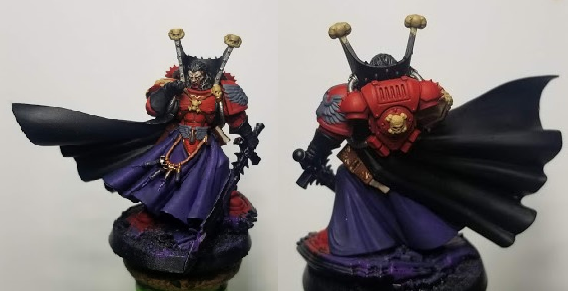
- The red armor was basecoated with several layers of Mephiston Red diluted with water.
- It’s OK if the first few coats are “streaky” or lack perfect coverage.
- Wait for the previous coat to dry and then go over it with another diluted coat of Mephiston Red.
- This will take 3-4 coats, maybe more. Patience is key – enjoy the process!
- The purple robes were basecoated with several layers of Phoenician Purple diluted with
- You could also use Xereus Purple as an alternative.
- The bone areas were basecoated with Zandri Dust
- The Blood Angel icons on the shoulder and waist were basecoated with Mechanicus Standard Grey.
- The metal was basecoated with Iron Warriors (you could also use Leadbelcher).
- The gold/brass areas were basecoated with Burnished Gold.
Shading / Highlighting (“Parade Ready”)
Painting Mephiston’s Face
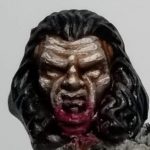
I recommend you paint the first to keep yourself motivated. You can re-attach the face once you’ve painted the top area of the model.
The secret to painting faces is watered-down, thin layers (mine were a bit chunky here). Go lightly when spraying primer so you don’t obscure detail. If you don’t get perfect coverage, that’s okay:
- The hair was painted with several layers of Black Templar Contrast Paint diluted 50/50 with Contrast Medium.
- The skin was basecoated with Rakarth Flesh
- The skin was then shaded using Skeleton Horde Contrast Paint diluted 50/50 with Contrast Medium.
- The skin was then re-painted with Rakarth Flesh (ignore the crevices), try to focus on the forehead, eyelids, nose, ridges above and around the lips and cheekbones.
- These areas were then highlighted with Pallid Wych Flesh diluted with water (leave some of the previous layer of Rakarth Flesh showing).
- These areas were further highlighted with Pallid Wych Flesh mixed 50/50 with White Scar.
- The blood on the face was painted with Flesh Tearer Contrast Paint heavily-diluted with Contrast Medium (at least 4 parts Medium to 1 part Flesh Tearer).
Painting Red Armor
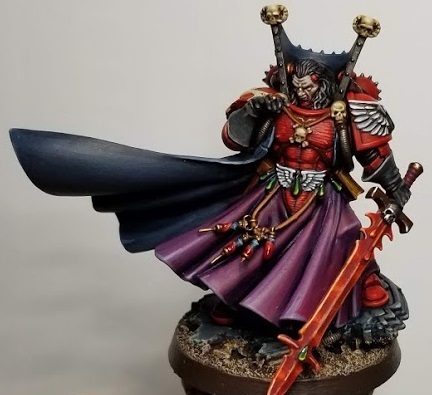
Reminder: See ‘Battle-Ready’ for basecoats.
- The red armor was first shaded with watered-down Khorne Red.
- You can be sloppy with this: Aim for the recesses and don’t worry if it spills over.
- The red armor was then blacklined with Incubi Darkness diluted with Lahmian Medium.
- Try to be neater with this step. Aim for all of the cracks in the armor.
- You can rub off the excess with your brush or a thumb if you need to.
- Clean up the areas with Khorne Red.
- The red armor was then highlighted with Evil Sunz Red diluted with Lahmian Medium.
- You can be sloppy with this step as well. Aim for the edges and raised areas.
- It’s OK if the red appears orange: We’ll be dulling this down when we glaze.
- The red armor was further highlighted with Wild Rider Red diluted with Lahmian Medium.
- Aim for the edges.
- The red armor was given a final highlight of Screaming Skull.
- Keep this limited to the tips of the edges, this should be a very fine highlight.
- The Secret Sauce: Glaze the red armor with Flesh Tearers Contrast Paint (diluted with Contrast Medium)!
- Warning: This will kill your previous highlights if you don’t dilute it with Contrast Medium (at least 4:1).
- I went too far with this. It’s hard to see my highlights in the photos.
- Re-add / clean-up your previous highlights after the glaze (if needed):
- You can be lighter with this stage, you don’t want to risk over-highlighting the red!
Shading / Highlighting Mephiston’s Robes
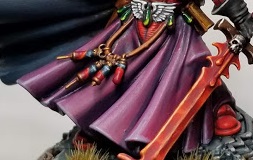
Remember that photo we took of the primed model? We’ll use that as a reference for placing our highlights:
- The Robes were shaded with Drakenhof Nightshade.
- The Robes were then re-highlighted with Phoenician Purple (ignoring the recesses).
- You could also use Xereus Purple
- These highlights were further highlighted with Screamer Pink mixed 50/50 with Xereus Purple.
- Leave some of the previous highlight showing.
- This previous highlight was mixed with Slaanesh Grey.
- Aim for the top of the folds in the robes.
- The final highlight was an edge highlight of Slaanesh Grey.
Painting Mephiston’s Cape
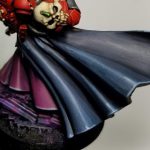
Remember to use that photo you took of the primed model as a guide for placing the highlights. It doesn’t have to be perfect, but it will help guide your brush!
The Trick to highlighting the cape will be leaving a sufficient amount of black showing:
- The cape was basecoated with Abaddon Black.
- The cape was first highlighted with Dark Reaper (ignore the recesses).
- The second highlight was Thunderhawk Blue (leave some of the previous highlight showing).
- The third highlight was Thunderhawk Blue mixed 50/50 with Fenrisian Grey.
- The fourth highlight was an edge highlight of Fenrisian Grey.
- The final highlight was an edge highlight applied to the corners only of Ulthuan Grey.
Shading / Highlighting the Bone:
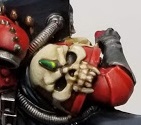
- The bone areas were shaded with Skeleton Horde Contrast Paint.
- The bone areas were then re-basecoated with Zandri Dust (ignore the recesses).
- These areas were then highlighted with Ushabti Bone (leave some of the previous highlight showing).
- This was further highlighted with Screaming Skull.
Painting the Jewels:
Try to keep the highlights limited to the “bottom-right” of the jewel. The “top-left” should remain Caliban Green:
- The jewels were basecoated with Caliban Green
- The jewels were first highlighted with Warpstone Glow
- The second highlight was Moot Green (leave some of the previous highlight showing).
- The third highlight was Yriel Yellow (this should be an edge highlight in the bottom-right).
- The final highlight was a dot of White Scar in the top-left of each jewel.
- Optional: After varnishing the model, you can apply a gloss highlight of ‘Ardcoat to give the jewels some shine.
Painting the Wings:
- The wings were basecoated with several layers of Dawnstone
- They were then washed with a coat of Basilicanum Grey Contrast Paint.
- The wings were then re-layered with
- The wings were then highlighted with Administratum Grey (leave some of the previous layer showing).
- The wings were further highlighted with Ulthuan Grey (leave some of the previous highlight showing at the base of each feather).
- The wings were given a final highlight of White Scar.
Painting the Gloves
I used a different set of greys to differentiate the gloves from the cape:
- The Gloves were basecoated with Abaddon Black
- They were then highlighted with Skavenblight Dinge
- The Gloves were further highlighted with Stormvermin Fur
- They were given a final highlight of Administratum Grey.
Painting Mephiston’s Force Sword Vitarus
Try to make your sword highlights “uneven” along different parts of the flat of the blade.
- The sword was basecoated with Mephiston Red
- The sword was then highlighted with Wild Rider Red
- It was then further highlighted with Troll Slayer Orange
- The sword was then given a final edge highlight of Fire Dragon Bright.
- The sword was then glazed with a coat of Gryph-Hound Orange heavily-diluted with Contrast Medium (1:4).
- The sword edges were then re-highlighted with Fire Dragon Bright.
Liam “Corrode” Royle
Let me tell you, after reading Joey’s comprehensive method above I feel like I have a tough act to follow. If you’re not quite on his level and wanting a simpler Mephiston which is closer to the box art version, here’s mine, which involved a lot fewer layers and a lot more Contrast.
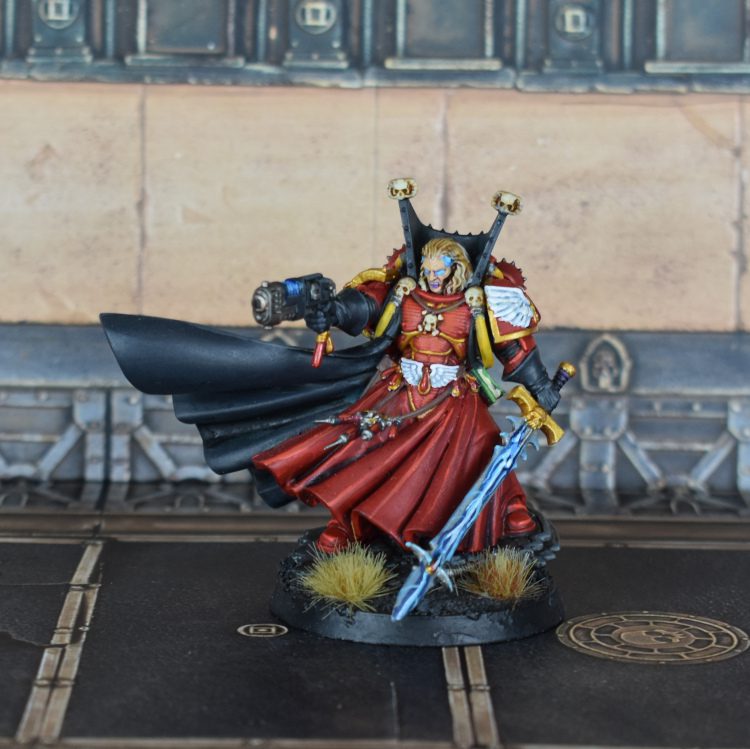
I primed my guy all over with Wraithbone, and then hit the robe and armour with Blood Angels Red and the cloak, gloves, and his extremely goth psychic hood with Black Templar. I also hit the wings with Apothecary White, the skin with Guilliman Flesh, and the hair with Snakebite Leather.
I then layered the red with Mephiston Red, the cloak with VMC Black Grey, the wings with pure VMC White, the hair with a touch of Screaming Skull, and the face with Kislev Flesh. The gold is a standard Retributor Armour -> Auric Armour layer.
I washed the robes (and mouth) with Druchii Purple, heaviest in the folds, and the chest armour with Casandora Yellow. This gave two distinctly different red tones, which helps differentiate the two big red areas. I then tidied up a bunch of the wash with more Mephiston Red and then hit the high points with Wild Rider Red, as well as the edges of the armour. The eyes and temples have a blue glow, which I replicated with some Teclis Blue and then some Baharroth Blue. The sword lightning I’m not really sure about at this point, but by the time I’d finished it was too late to change – this is just Kantor Blue, Teclis Blue, Baharroth Blue, and then some VMC White.
Finally, fitting the Halloween theme, the skulls are Rakarth Flesh, then Ushabti Bone, washed Seraphim Sepia, and then layered Ushabti Bone once again.
Have any questions or feedback? Drop us a note in the comments below or email us at contact@goonhammer.com.

